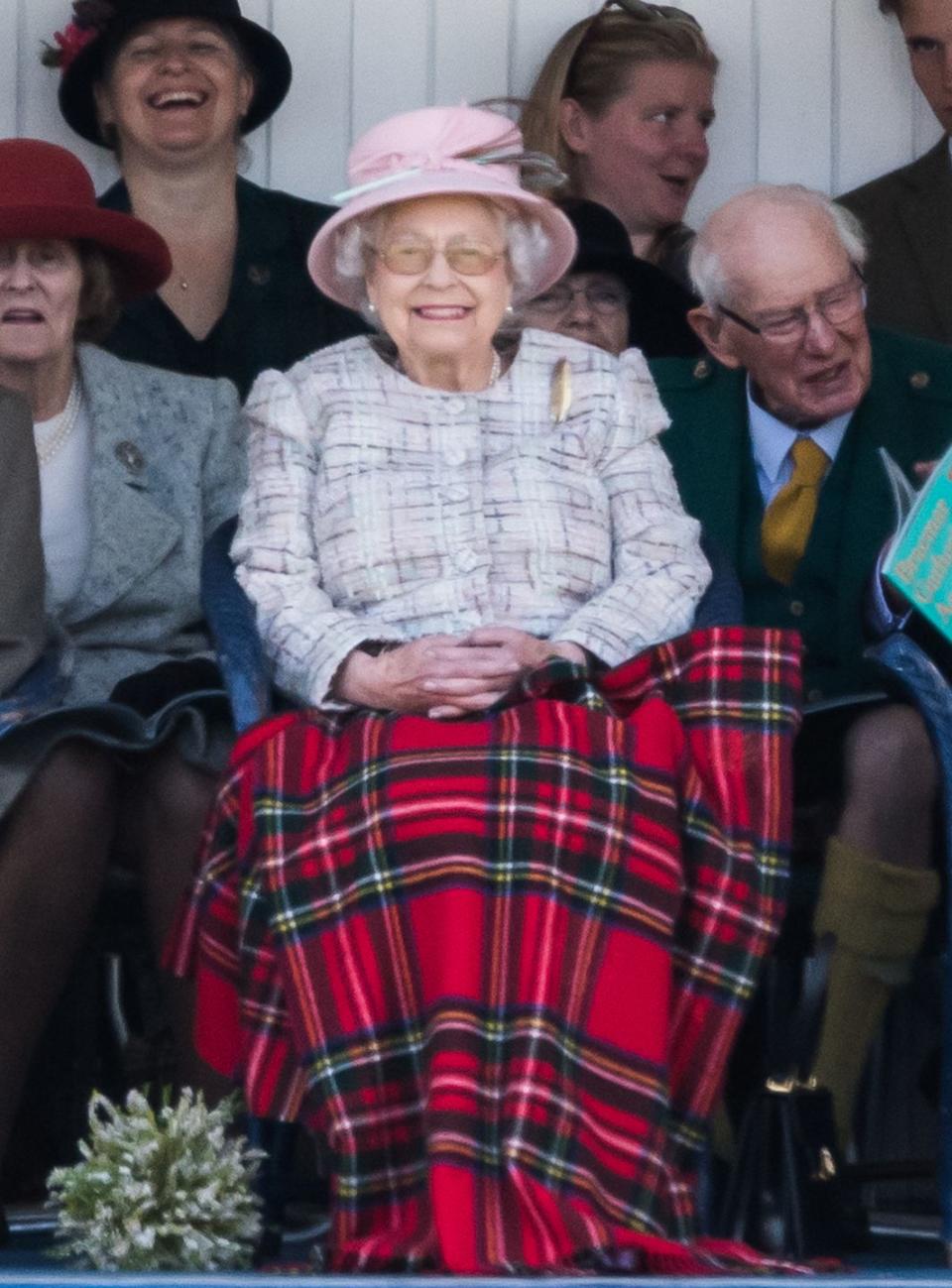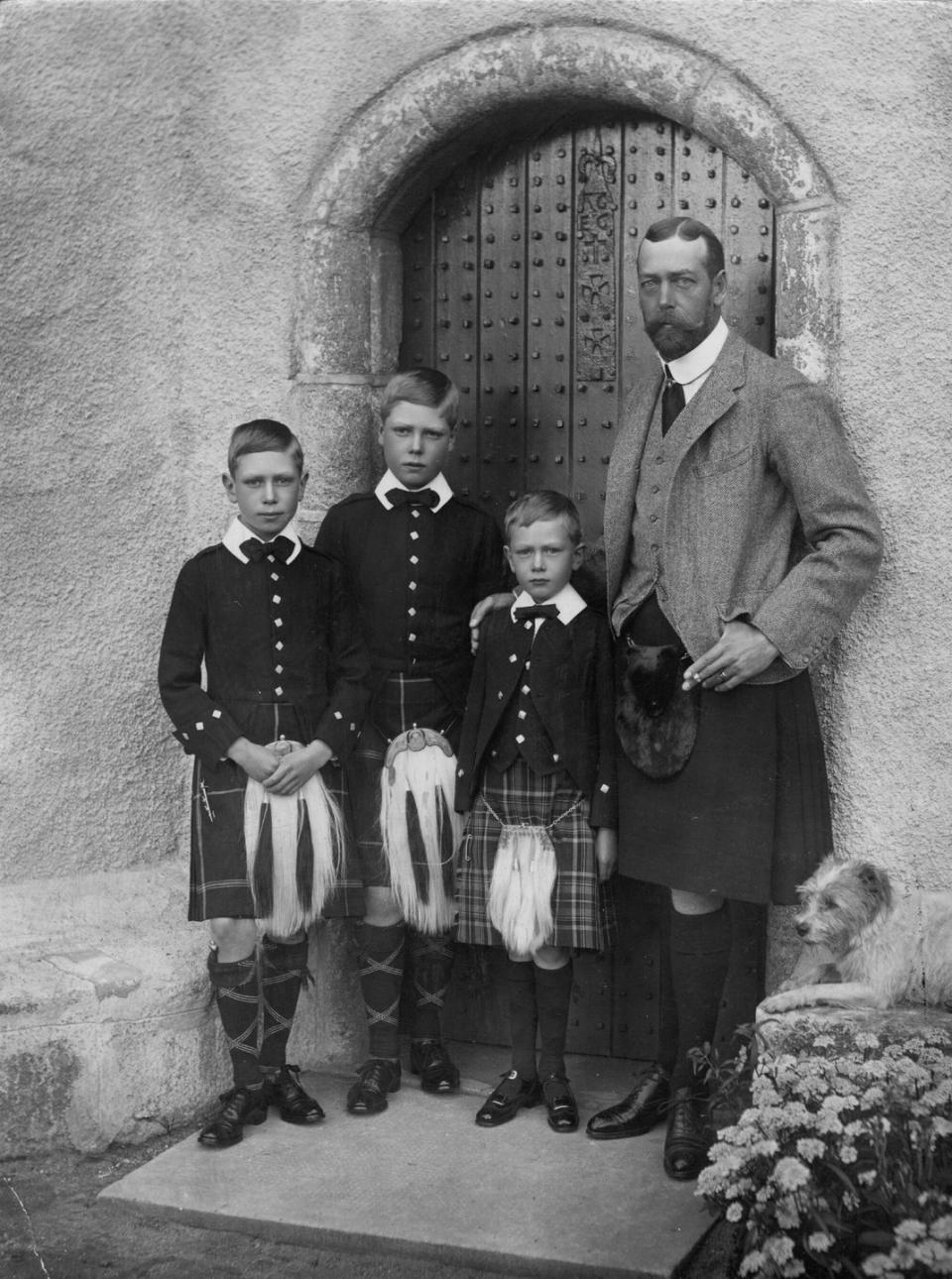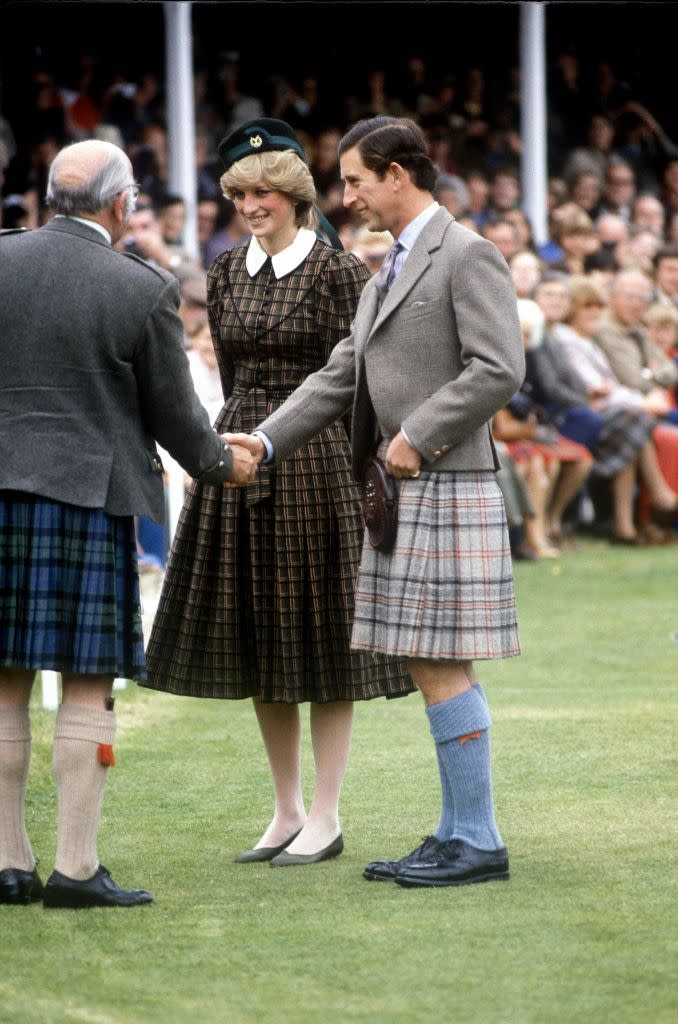The History of the Royal Family's Tartan
- Oops!Something went wrong.Please try again later.
"Hearst Magazines and Yahoo may earn commission or revenue on some items through the links below."
Though the royal family is often seen wearing tartan while in Scotland, the pattern is especially prevalent at The Ghillies Ball, as seen in The Crown's fifth season. The ball was first held by Queen Victoria and her husband, Prince Albert, after they purchased the Balmoral estate in Scotland and became an annual royal tradition throughout her reign. Even in her later years, Victoria would attend the ball with, "a sash of Balmoral tartan slung across the bodice of her black satin gown," according to Greg King, author of Twilight of Splendor: The Court of Queen Victoria During Her Diamond Jubilee Year.
Queen Elizabeth's grandfather King George V, her father King George VI, and, of course, the Queen herself carried on the tradition, including the splash of Scottish style in the form of their signature tartan.
While Victoria often favored the Balmoral tartan, in The Crown we see the women of the royal family sporting a slightly different plaid—the Royal Stewart tartan. So where did these patterns come from and what's their significance?

The Royal Stewart Tartan
The most recognizable royal tartan, the Royal Stewart (sometimes spelled Royal Stuart) dates back at least as far as 1800, according to the Scottish Register of Tartans, though it may in fact be much older. Apparently deriving its name from the Stuart dynasty of Scotland, there have been unproven suggestions that the tartan could have been worn by supporters of Charles Edward Stuart, also known as Bonnie Prince Charlie, during his failed attempt to restore the Stuart monarchy through a Scottish uprising in the mid 1700s, however the register notes that such claims are "unproven and likely to be a myth."
Whatever the origins, the Royal Stewart tartan nonetheless has a longstanding royal pedigree. King George IV (Queen Victoria's uncle) wore the tartan during his 1822 tour of Scotland, and Victoria later officially adopted it as the tartan of the royal family. During his reign, King George V, Queen Elizabeth's grandfather, attempted to enact rules making it impossible for anyone to wear the tartan without the express permission of the monarch, however the plaid's popularity, numerous variations, and widespread use ultimately made it too difficult to enforce such restrictions. He wasn't completely unsuccessful on that front, however, as he did set aside the Balmoral tartan for the private discretion of the royal family.

The Balmoral Tartan
Like the Royal Stewart, the precise origins of the Balmoral tartan appear to be lost to history. While legend has it that the pattern was created by Prince Albert in 1853 after he and Queen Victoria acquired Balmoral, per the Scottish Register of Tartans, modern scholars have found instances of the tartan as early as 1850, making those claims seem less likely.

Regardless of its providence, it was a clear favorite of Queen Victoria's who often wore the pattern while in Scotland, and was later made the private purview of the royal family by King George V. As a result, the tartan can only be worn by those with permission from the monarch, including the Balmoral Estate pipers.
Into modern times, the tartan has maintained its close ties to the royal family, and is a particular go-to for King Charles, who is often seen wearing it during the family's holidays at the tartan's namesake estate.
You Might Also Like

